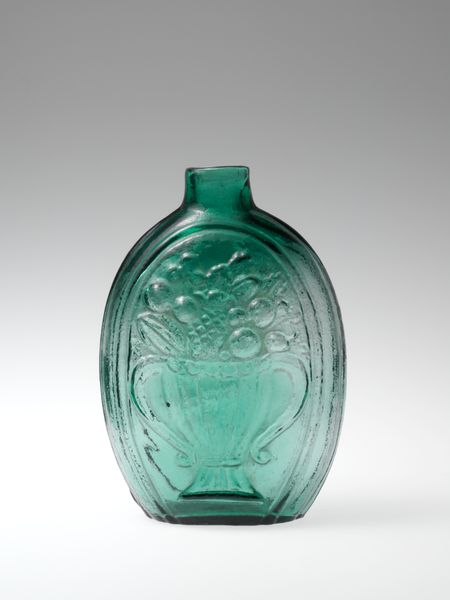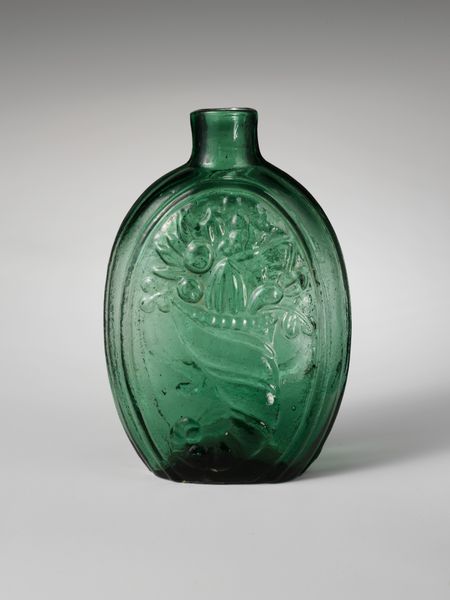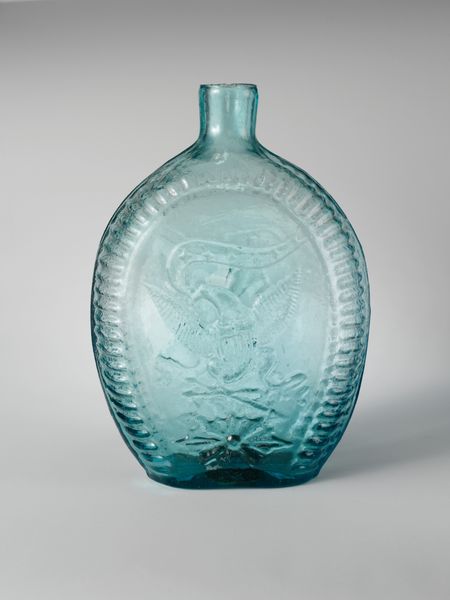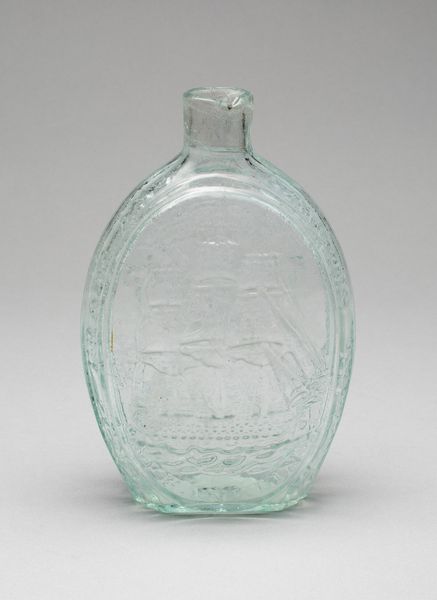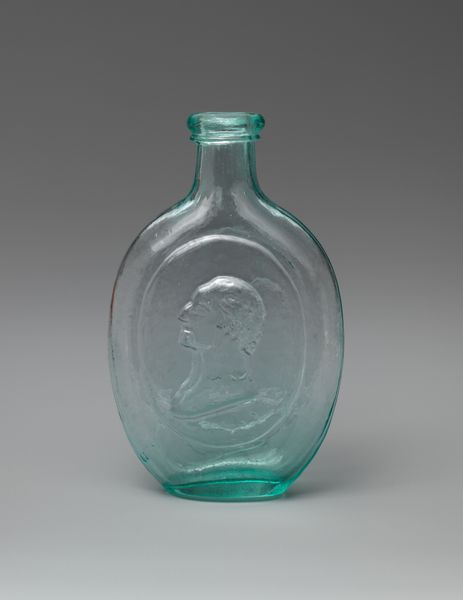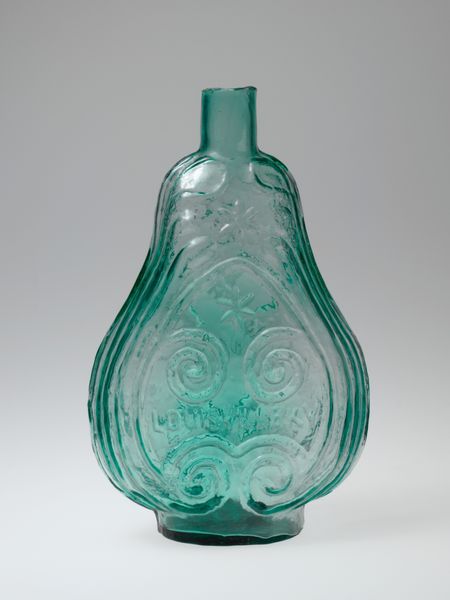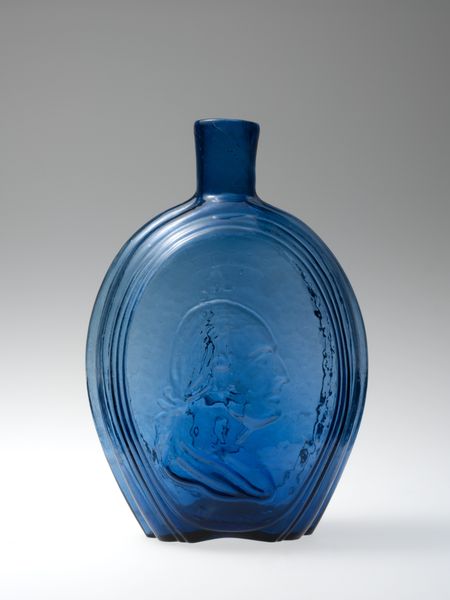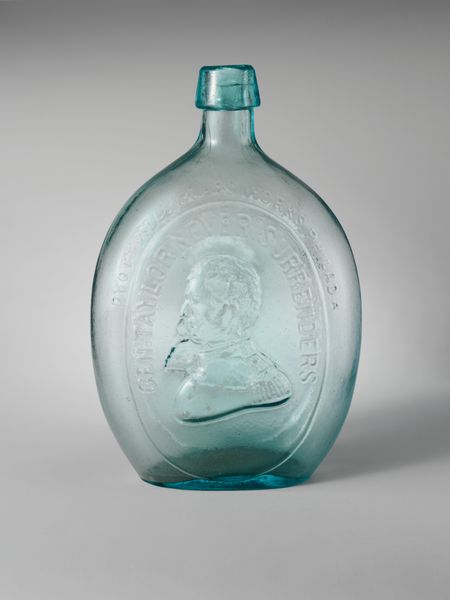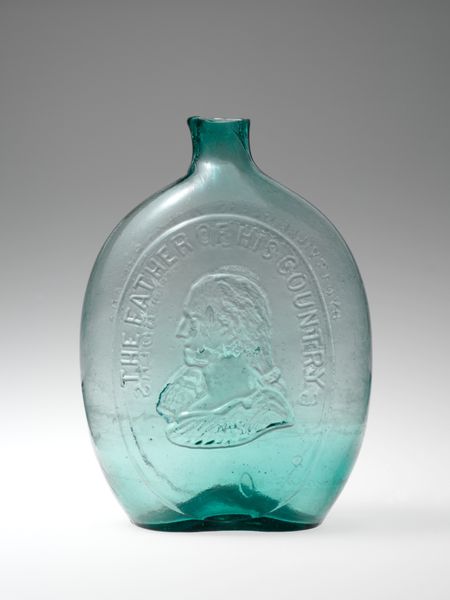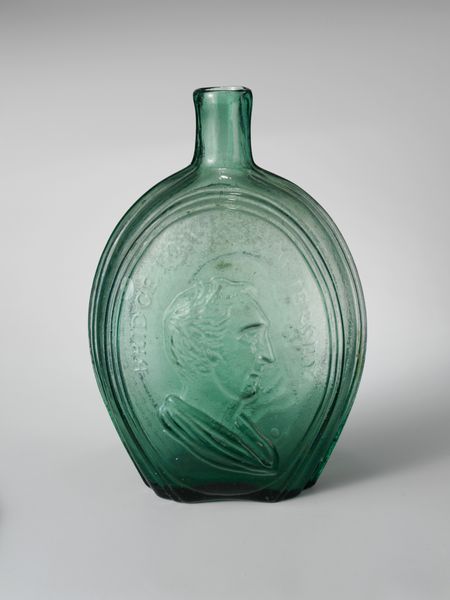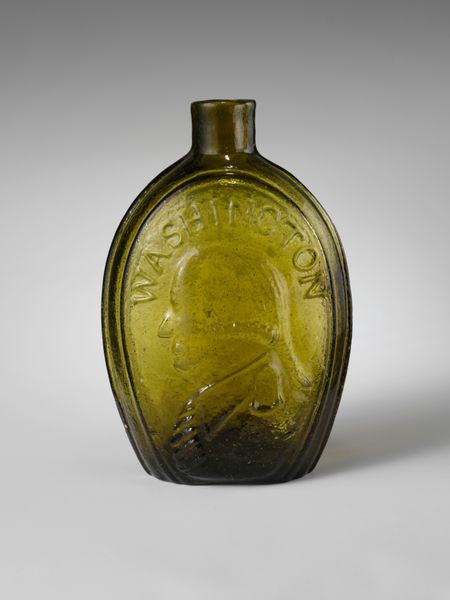
glass, sculpture
#
glass
#
sculpture
Dimensions: H. 6 5/8 in. (16.8 cm)
Copyright: Public Domain
Curator: Let’s turn our attention to this pint flask, created by the Lancaster Glass Works sometime between 1850 and 1860. It’s made of a beautiful, light blue glass. Editor: I’m immediately struck by its color and how simple yet elegant its shape is. It almost looks like it could be an artifact from the sea. There’s something calming about the blue. Curator: Indeed. Glassblowing was a significant industry at that time, and these flasks, although functional, often carried intricate designs. Notice the molded image; it seems to depict a stylized floral motif rising from a fluted container, framed by the manufacturer's name. Flasks such as these provide insight into early American industrial art and marketing strategies, appealing to a growing consumer market. Editor: I wonder about the significance of the specific flower that was chosen and why they made a fluted base for the pot to sit on. It could represent idealized notions of nature and growth, or perhaps even domesticity at a time when those ideas were undergoing massive transformation and scrutiny because of chattel slavery. It also could serve as branding to draw you to purchase that maker's libations. Curator: Certainly, and we can also consider the cultural context surrounding alcohol consumption during that period. The rise of the temperance movement and changing attitudes toward alcohol play into how people used, displayed, and valued these flasks. We also need to factor in the politics of industrial production. What were the labor practices like at Lancaster Glass Works? Editor: That's essential! Thinking about who had access to such luxury items and the labor required to produce them is crucial. Whose stories are often left out of these narratives? For a humble glass bottle, there are myriad histories within it waiting to be unpacked, specifically of exploitation, class and capitalism. It almost feels ghostly with all of the hands who have likely used it over time. Curator: It’s amazing how a simple utilitarian object such as a bottle can spark such reflection, and also speak to broader shifts within society. Editor: It makes you realize that nothing exists in a vacuum, every artwork carries the imprint of its own historical moment.
Comments
No comments
Be the first to comment and join the conversation on the ultimate creative platform.
